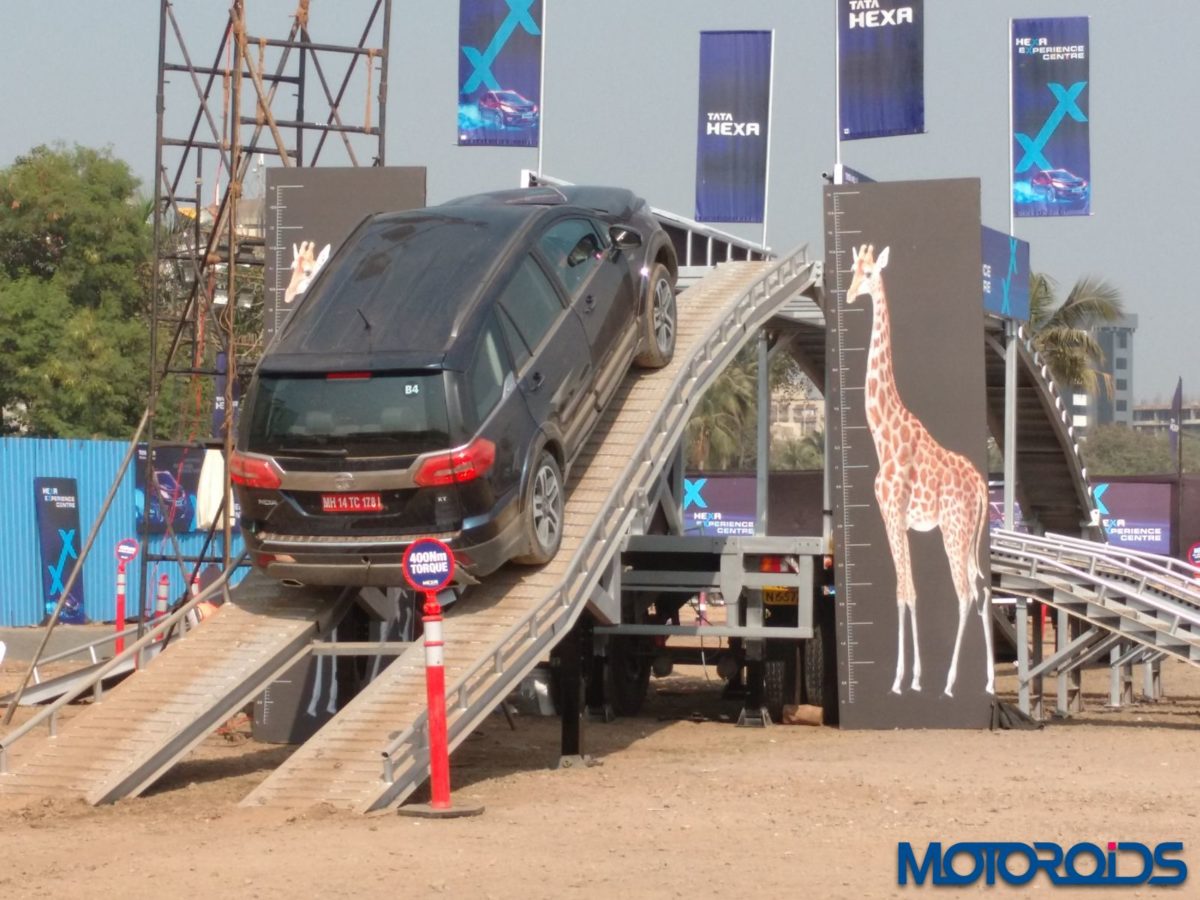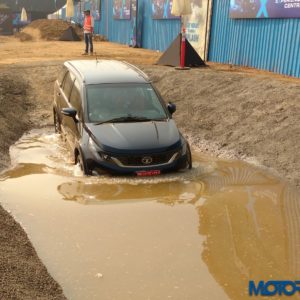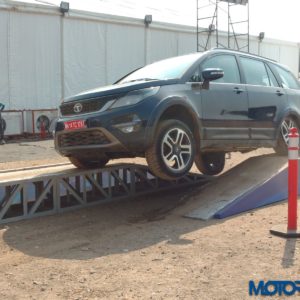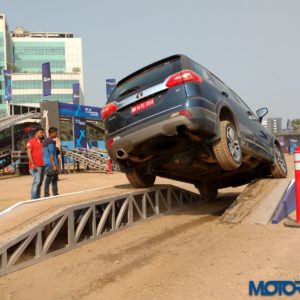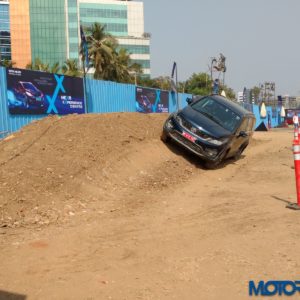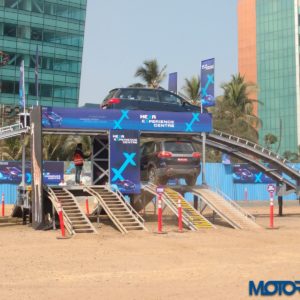Tata Motors is touting the Hexa as a proper off-roader, what with the Land Rover type Super Drive modes, a massive ground clearance and a proper 4×4 option available with the manual transmission. The resurgent Indian car maker is leaving no stone unturned in projecting the image of the Hexa as a properly capable mud plunger, comparable to the big boys from Ford and Toyota which sell at a hefty premium and currently rule the premium SUV segment in India. The Indian company has been conducting off-road drives of the Hexa in various parts of the country using a custom made off-road track meant to highlight the capabilities of the vehicle. After conducting these off-road drives across a number of cities in the country, the Hexa Off-Road Experience, as the activity is called, made its way to the city of Mumbai, about a week ahead of its launch that took place on January 18, 2017. As you’d expect, Motoroids were a part of the drive experience, and here’s a log of what the setup looked and felt like.
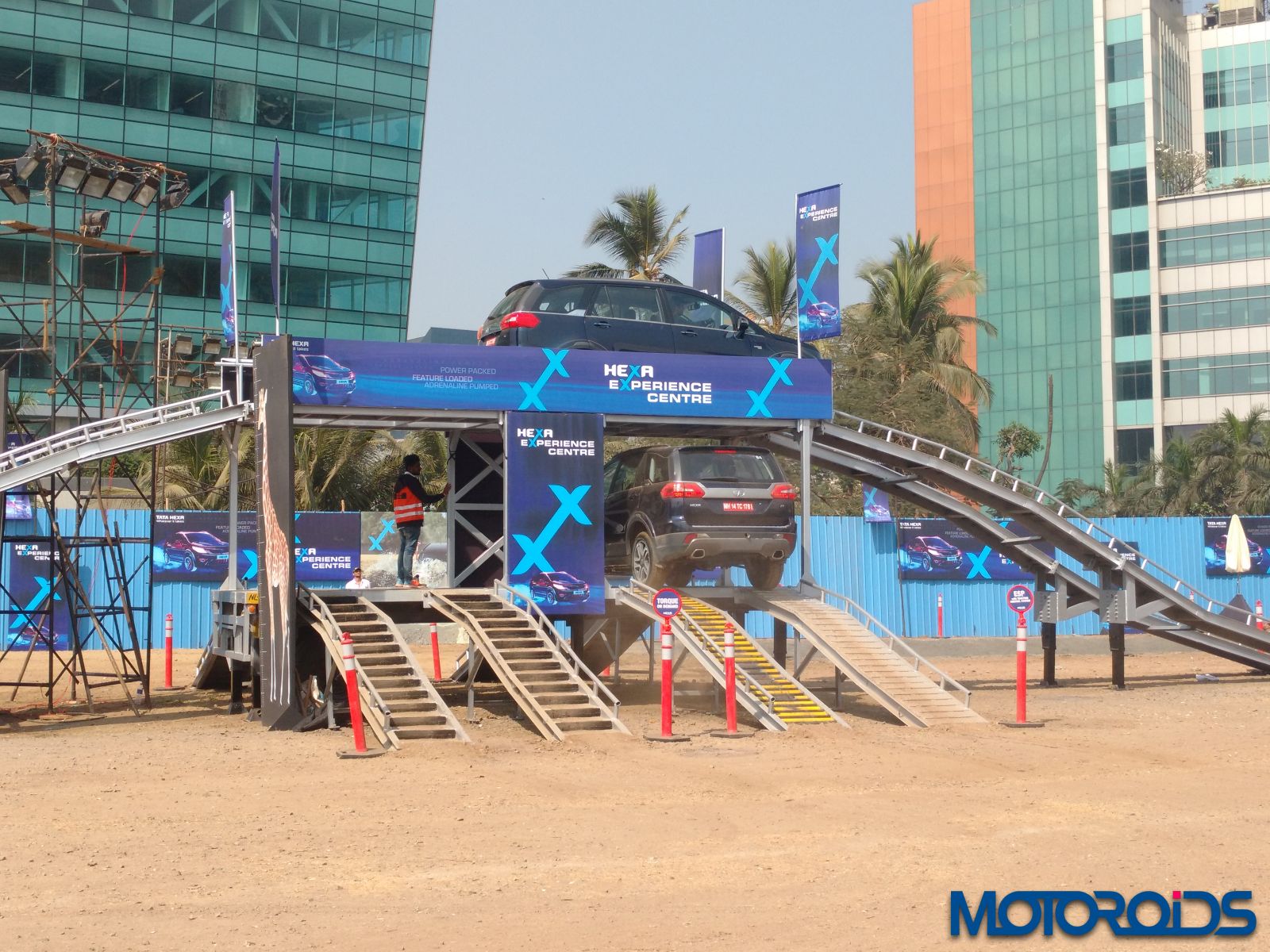
As I entered the venue I was welcomed by the sight of a whole bunch of Hexa vehicles. As I waited for my turn to take the beast around the course, I utilized the time getting myself acquainted with the interiors of the machine, thanks to a few units of the model that were on display.
A few minutes later, a top-end Arizona Blue Hexa XT (Manual) 4X4 was ready for me. The experience included two rounds of the course – the first round included the instructor driving through the course and explaining all the nitty-gritties of of the track. The second round (or more if desired) involved the participant driving the Hexa and getting a taste of its capabilities first hand. The course took us through various obstacles which tested off-roading capabilities of the Hexa such as traction control, side incline angle, up-hill and down-hill climbing and descending abilities, HHC, HDC, ground clearance and water wading.
Click here to read our review of the Tata Hexa AT and Hexa MT 4×2
After a quick round of explanations, I was ready to get into the driver’s seat. The first obstacle on the course was a set of alternating ramps set up to showcase the traction control system of the Hexa. As we slowly climbed on to the angular ramps, the traction control system drew back the power from the wheel suspended in the air before locking it and then sending this power to the wheels on the ground, hence achieving maximum traction. While the traction control seems to work really well, we probably could have asked for a little better wheel articulation from the wheels that went hanging, since the Hexa is supposed to be a capable off-roader.
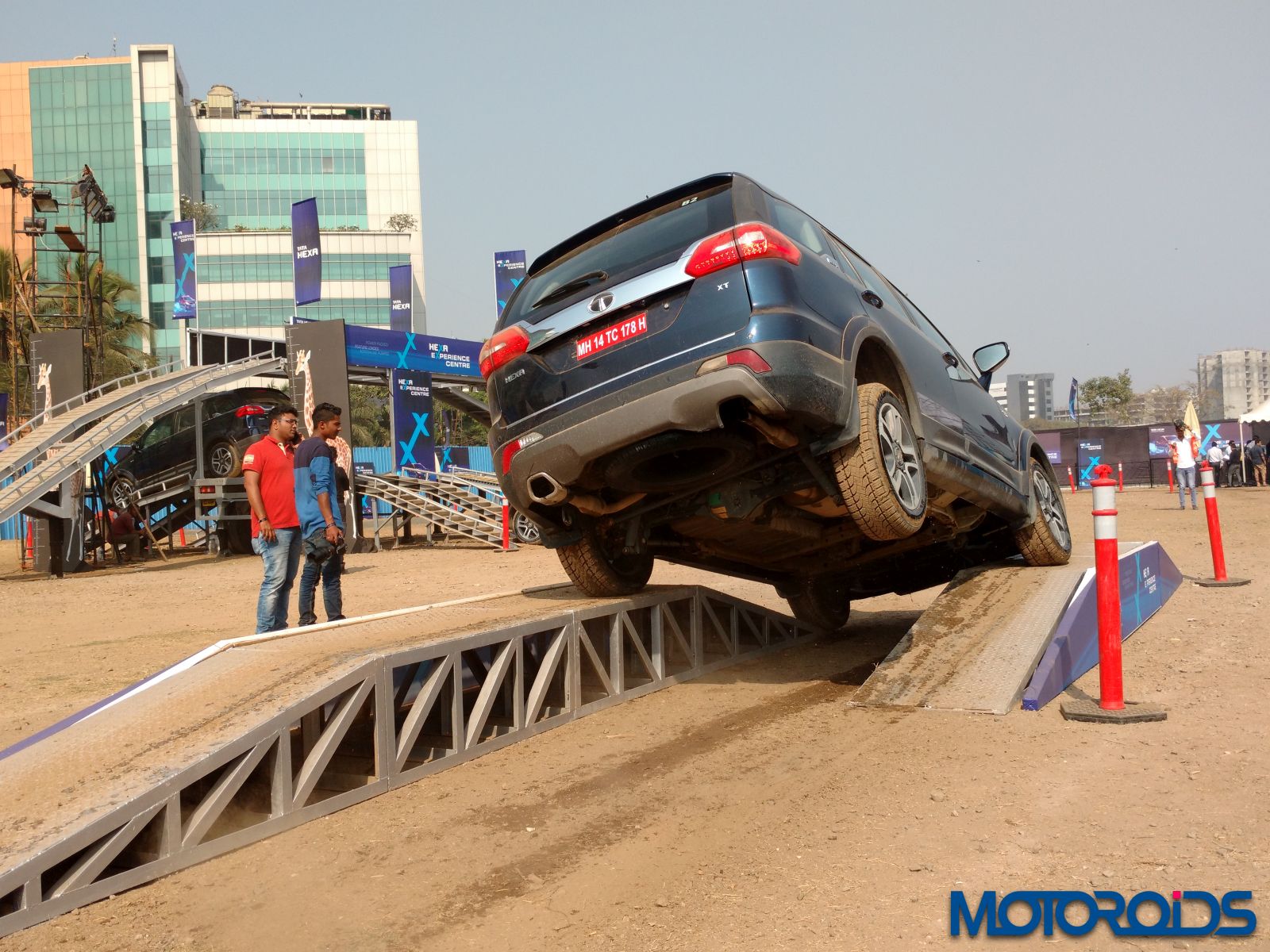
Post the traction control bit, it was time for the ‘torque-on-demand’ obstacle where the Hexa was expected to climb up a ramp which was made of mini steps, minimizing the surface area and requiring the torque to be delivered consistently. A slightly heavier right foot than usual, as recommended by the instructor, saw the Hexa climb up the rather daunting looking setup without a hiccup.
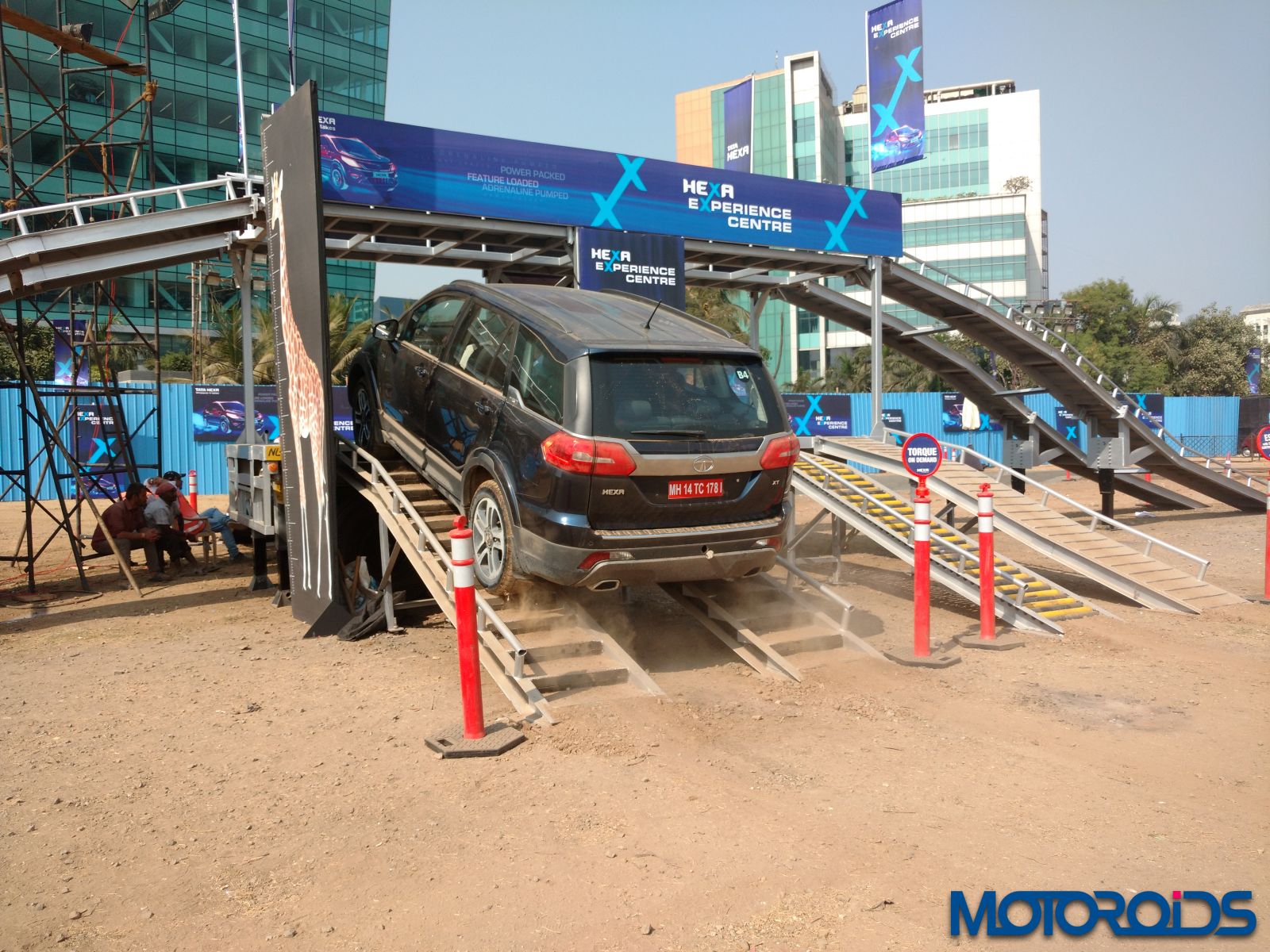
The next obstacle featured a ramp with rollers on the left ramp and normal surface on the right ramp. This setup tried to simulate a scenario where the wheels on the two sides of the front and rear axle had drastically different traction. The ESP cuts in to ensure that the wheels are rotating at the same speed, thus providing the much needed stability to the car in scenarios where one, or multiple wheels may lose traction suddenly. An example of this sort of a scenario would be a partly dried road with water puddles. The ESP would interfere in such scenarios and provide stability if one of more of the wheels suddenly lost traction.
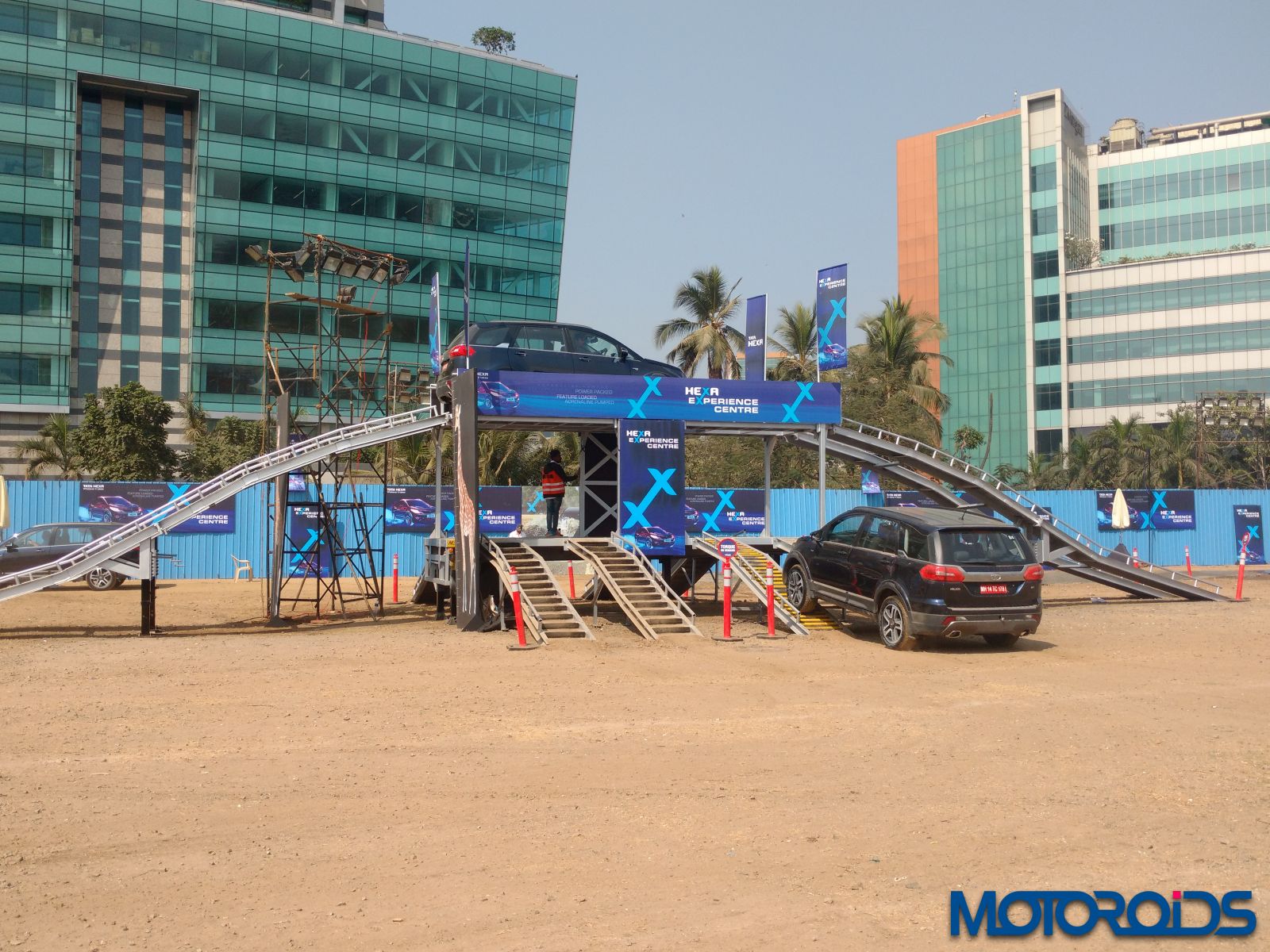
The next course was the the 40 degree side incline ramp that demonstrated the Hexa’s Electronic Stability Program (ESP) with roll over mitigation. With the car tilted at 40 degrees on one side, and no apparent instability or danger of rollover, we were convinced of the Hexa’s capability to negotiate this sort of a scenario in the real world. An interesting bit here was the big banner set up by Tata Motors that said ‘If you can read this clearly, you are at a 40 degree incline’.
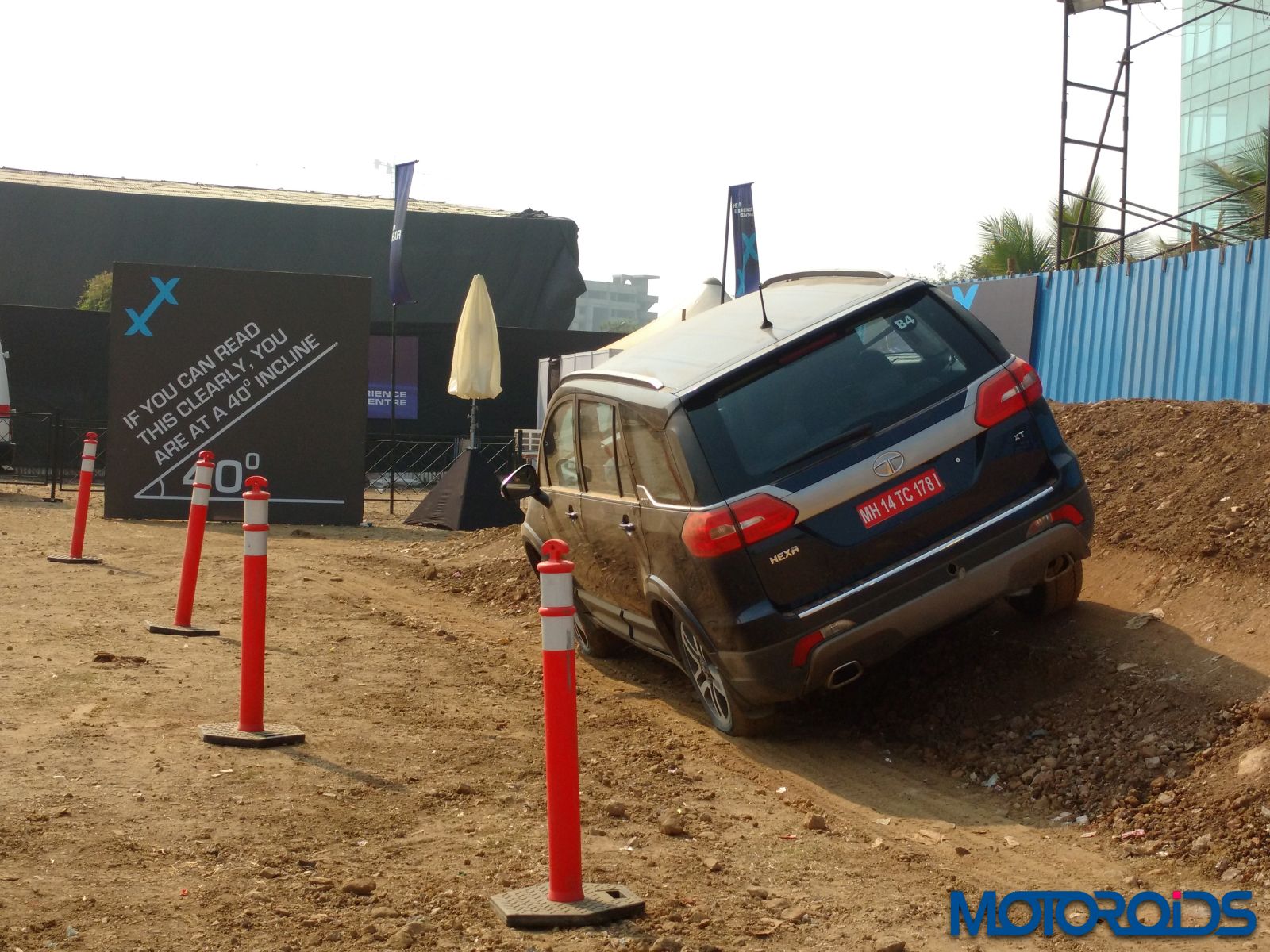
The next course comprised of a series of wooden stumps of varying heights planted into a steel platform. This course simulated blocks of various heights, testing the ground clearance of the Hexa. The Hexa, with its 200mm of clearance managed to clear the obstacle with minimal effort.
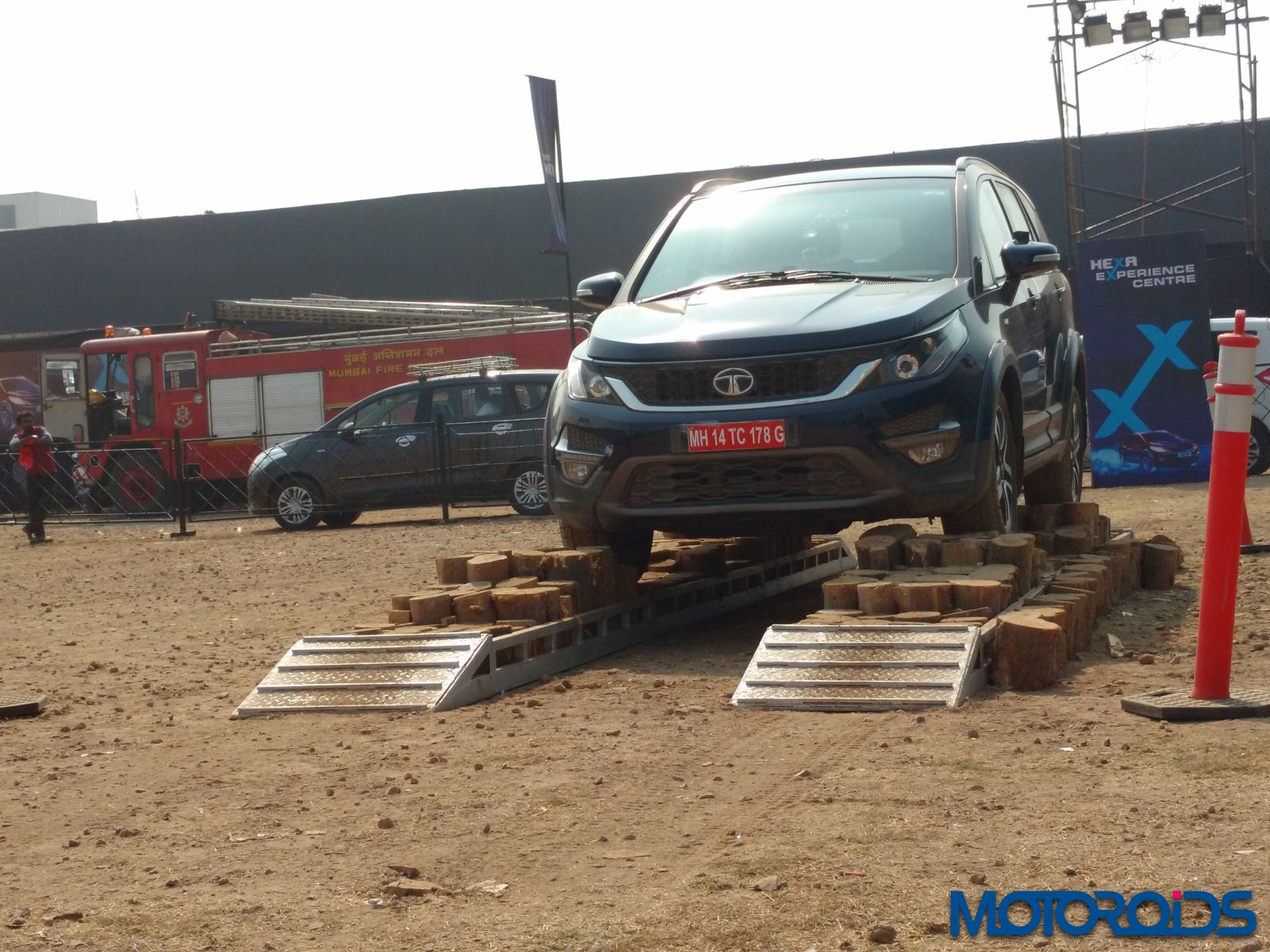
Next, the instructor asked me to head over to a huge ramp, a rather intimidating setup that you would not witness in most run-of-the-mill off-road experiences. The height of this ramp was about 13 feet from the ground. After having started the ascent and having climbed the ramp by a full car length, the instructor asked me to apply the brakes. This is where the Hill Hold Control (HHC) function on the Hexa cut in. Despite having taken my foot off the brake, the Hexa prevented the car from rolling back for three seconds allowing me to move ahead without the danger of rolling back and losing control. As I started going up the incline once again, a large portion of the 400 Nm of torque available on tap made its presence from the very bottom of the rev range, as the Hexa went up the ramp with me just feathering the throttle.
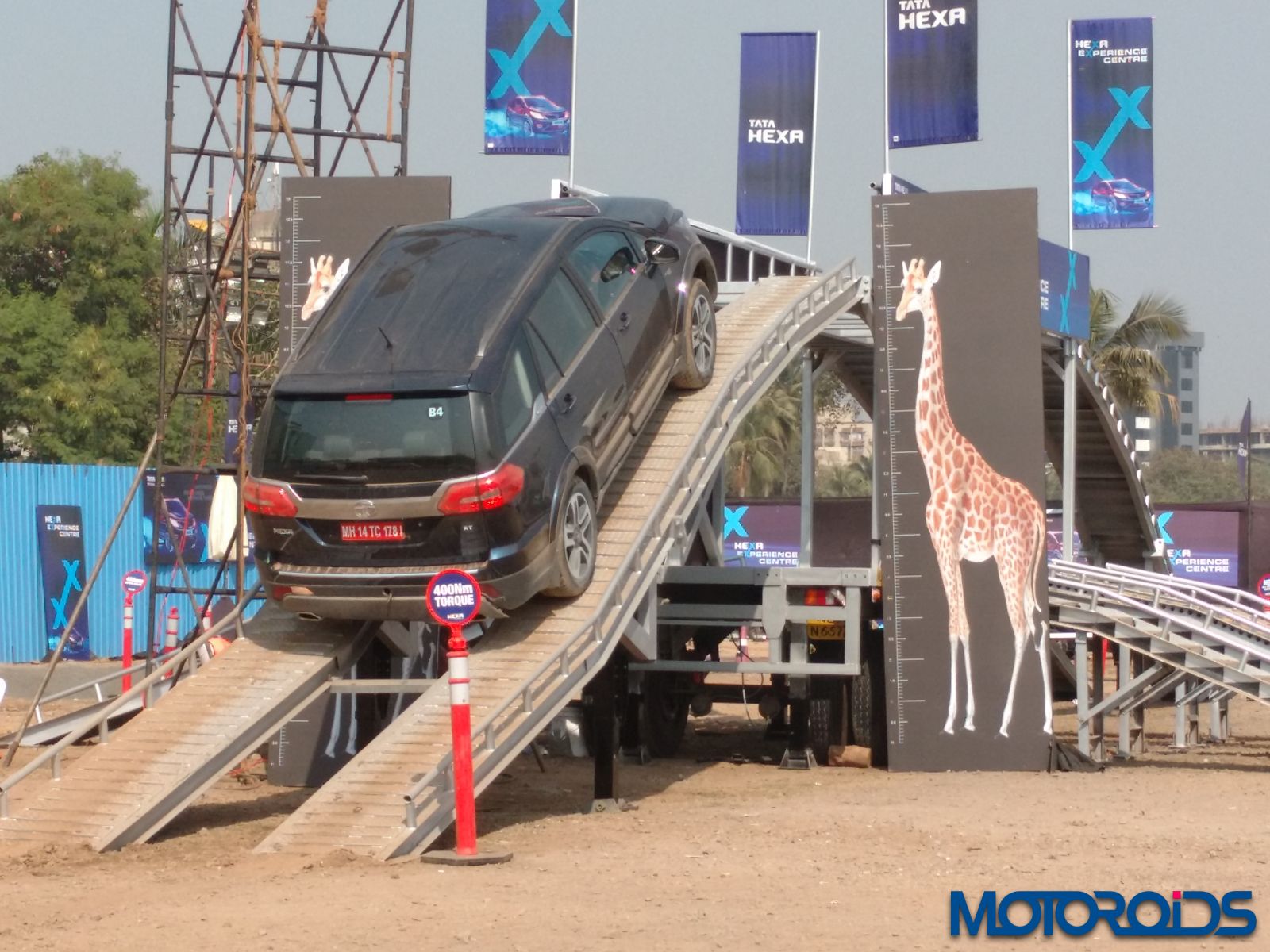
After slowing down at the top, we began the descent where the Hexa showed yet another useful feature, the Hill Descent Control (HDC). The function, which has to be manually switched on via the button situated below the infotainment system, helps the vehicle maintain a constant speed while going downhill.
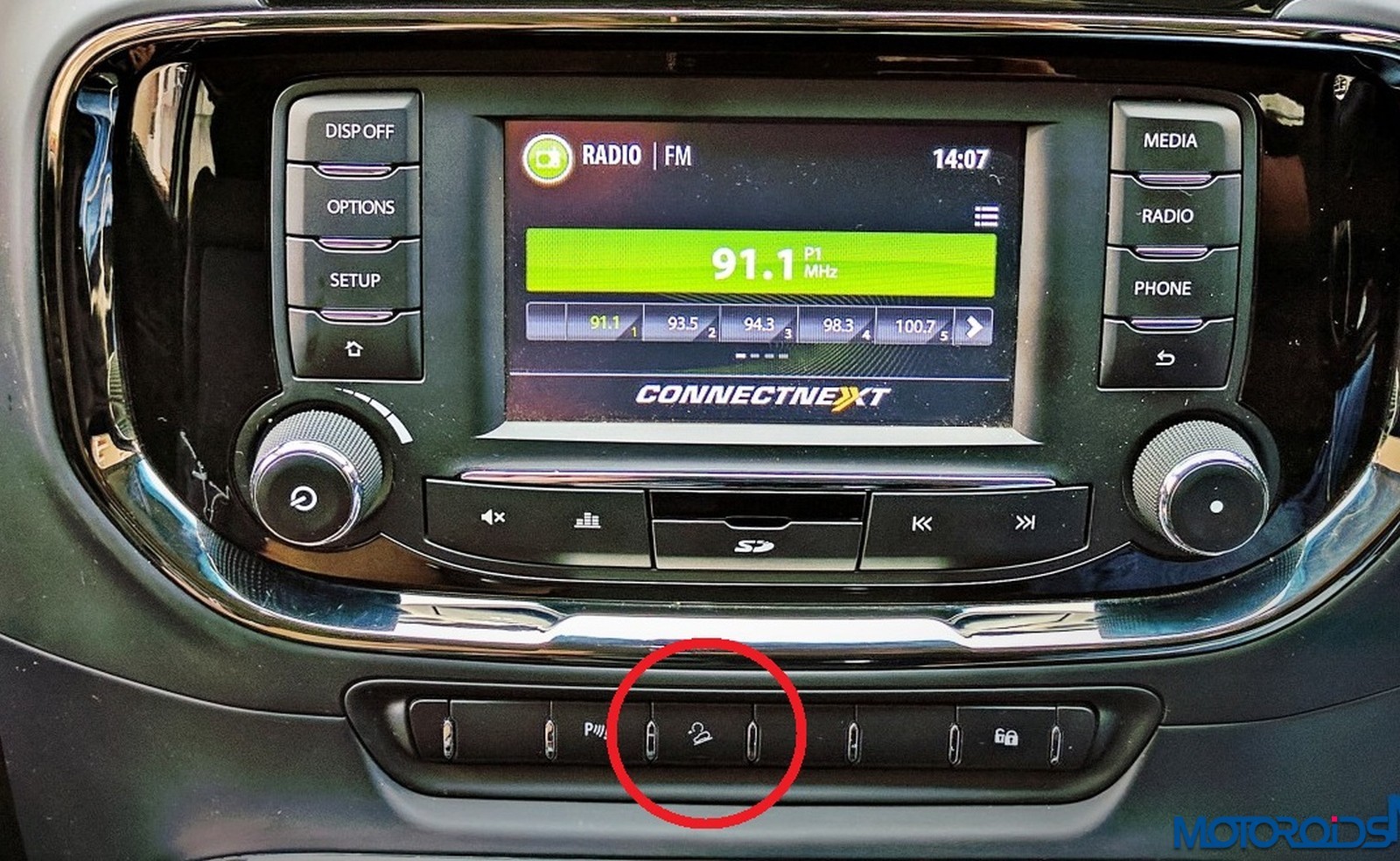
The feature does not need any input from the driver as the electronics control the speed via the braking system. If, however, you happen to press the accelerator or brake pedal, it overrides the system, giving back the driver the control of the vehicle.
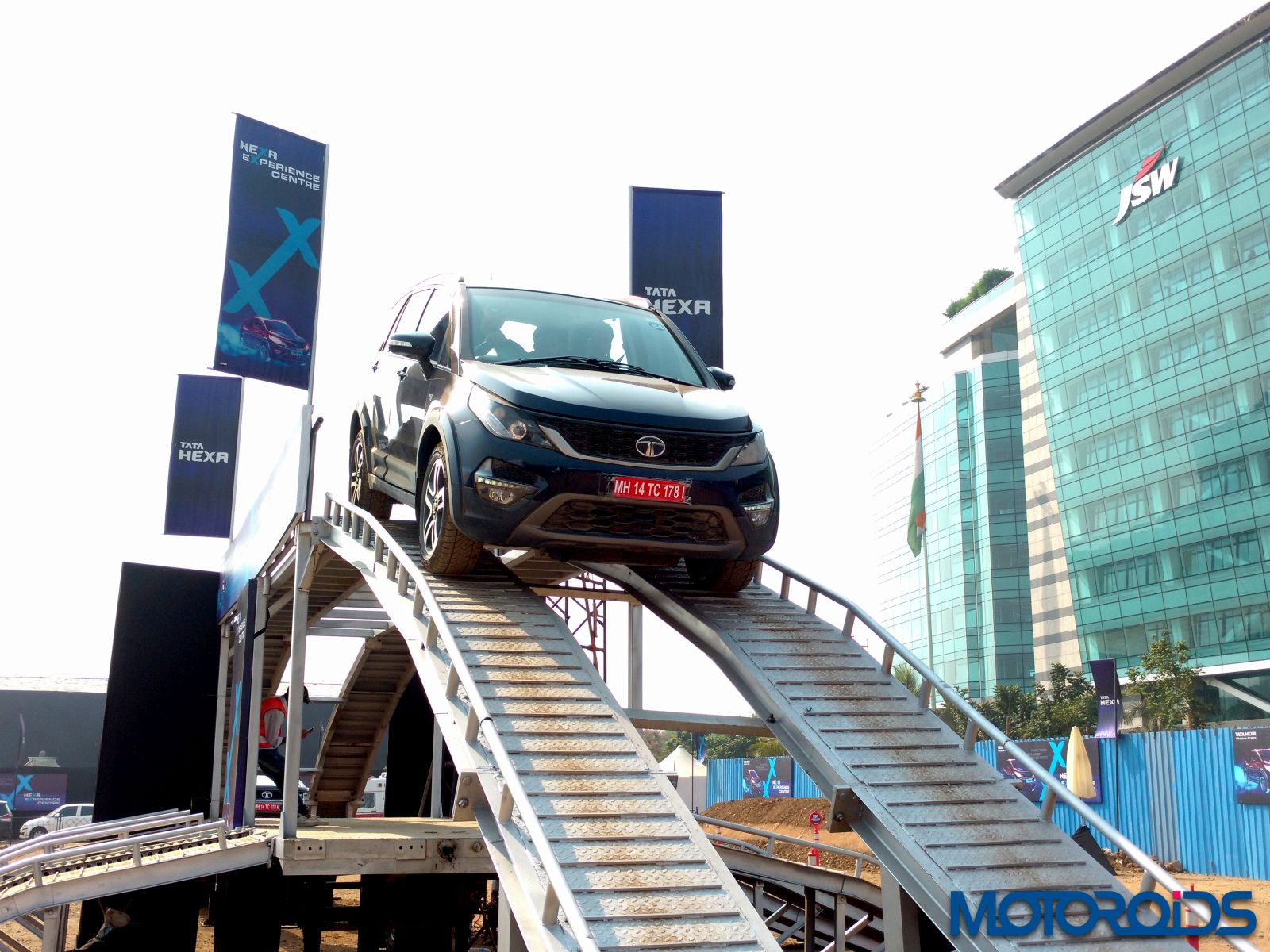
Last, but definitely not the least, was the water wading obstacle. The Hexa, according to Tata Motors is built to wade through 450mm of water. While the volume of the water at the course didn’t suggest a 450mm depth, it was fairly deep. Halfway through the pit, the Hexa’s wheels were partly submerged into the water. This one wasn’t much of a task for the Hexa, and it managed to handle the obstacle without breaking a sweat.
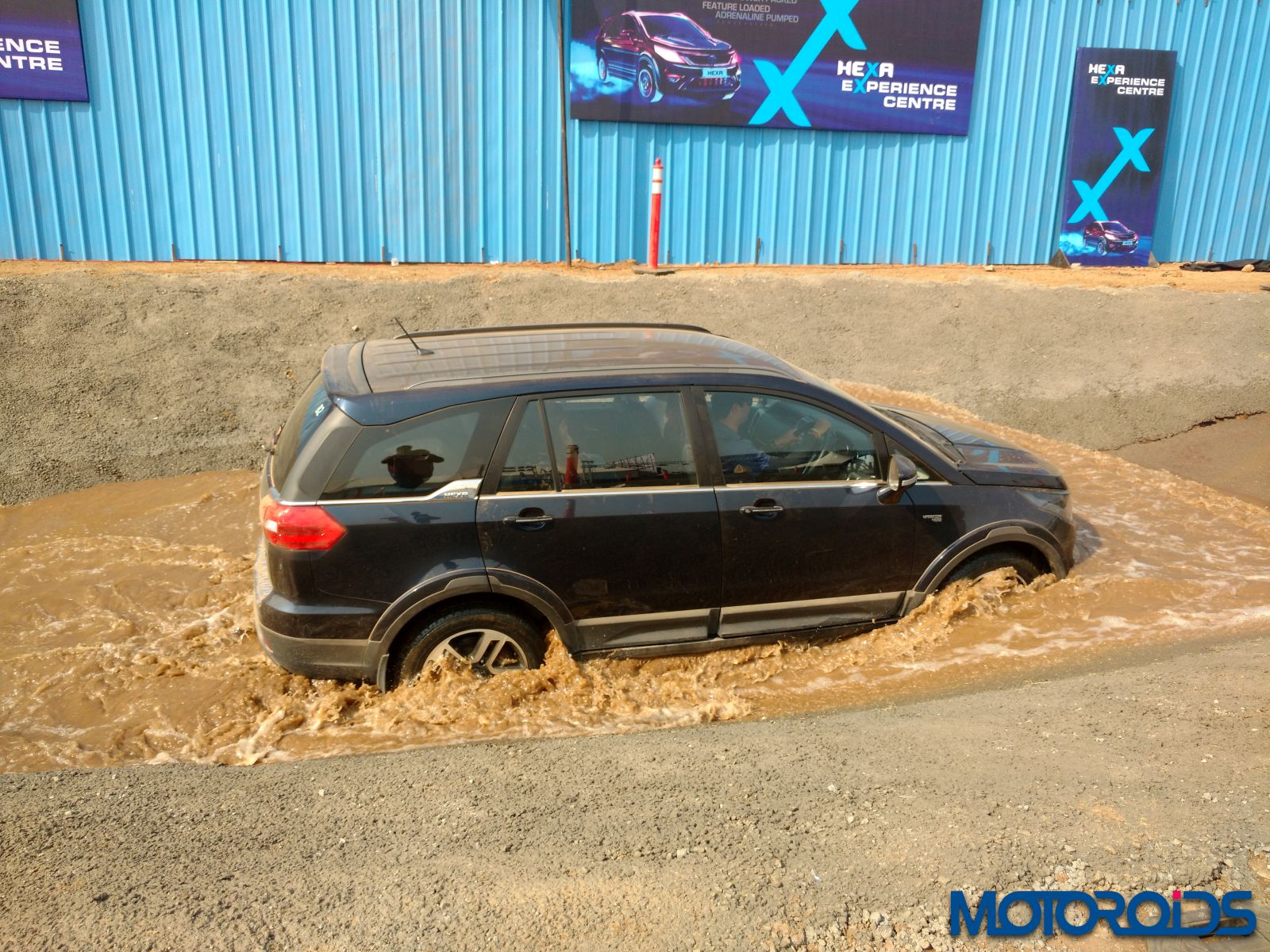
While I am not the kind of person who likes taking his car off the beaten trail often, the Hexa at the Off-Road Experience showcased why it’s important to have a capable off-roader by your side if you ever decided to make your own road.
You can read our review of the Tata Hexa 4×4 here.
Following is an image gallery of the Tata Hexa Off-Road Experience (click to expand):

